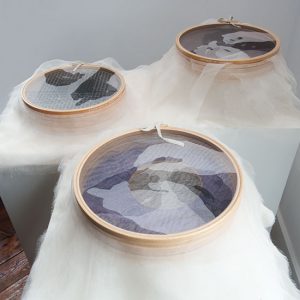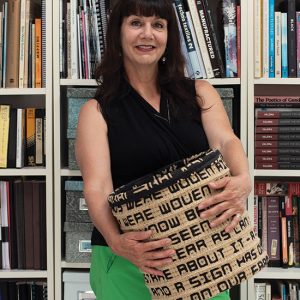In an artspace article last spring, “8 ‘Unbeweavable’ Textile Artists Redefining the Traditional Medium,” the author, Jillian Billard, profiled eight contemporary textile artists who keep the historical and cultural significance of the medium in mind, while addressing topics ranging from

2.75″ x 17″ x 17″; 5″ x 17″ x 17″; 6″ x 17″ x 17″, 2011. Photo by Tom Grotta.
Several of the artists represented by
Deborah Valoma is an artist and historian. Intensely research-based, her studio practice harnesses the nuances of the humble, yet poetically charged textile medium. Using hand construction techniques and cutting-edge digital weaving technology, her work hugs the edges of traditional practice. She upholds traditional customs and at the same time, unravels long-held stereotypes. Drawing on a growing body of scholarship on textiles, she has developed a rigorous series of textile history and theory courses for students from differing disciplines interested the theoretical discourses in the field of textiles. Valoma believes that students must locate themselves within historical lineages in order to understand the historical terrain they walk (and sometimes trip) through daily.

coiled and twined waxed linen thread, 54” x 16” x 4”, 2017. Photo by Tom Grotta.
Artist Ferne Jacobs explores feminist themes in her work. “My art is made in an attempt to serve the sacred in the feminine, listening and creating a relationship with my own inner nature. Interior Passages is an example. “In the
Regeneration is a theme in the work of both Karyl Sisson and Wendy Wahl. Sisson

